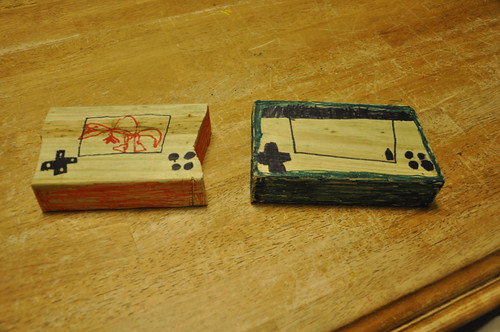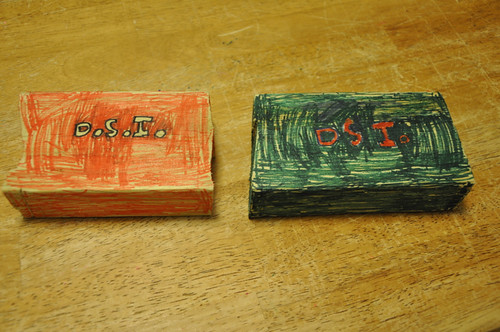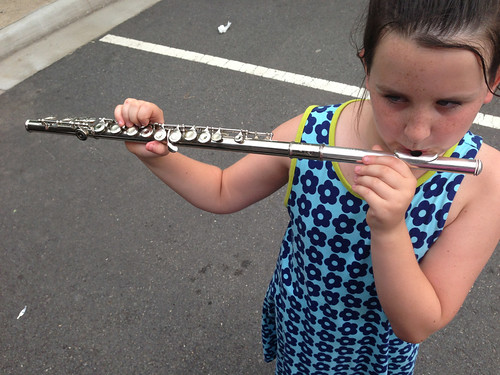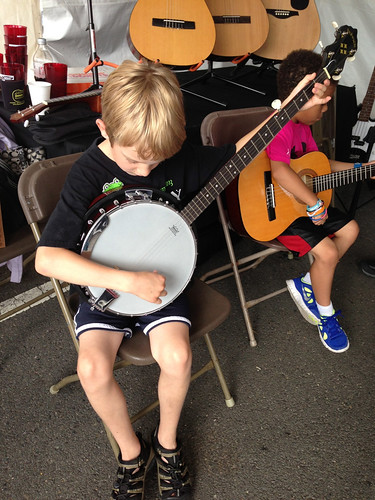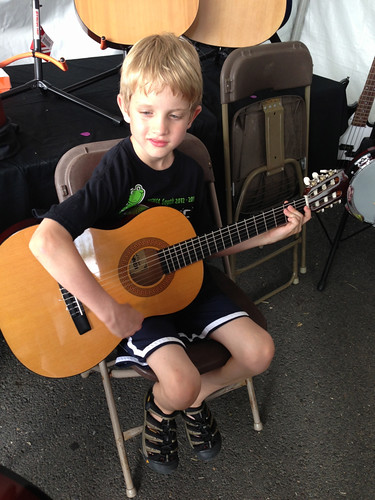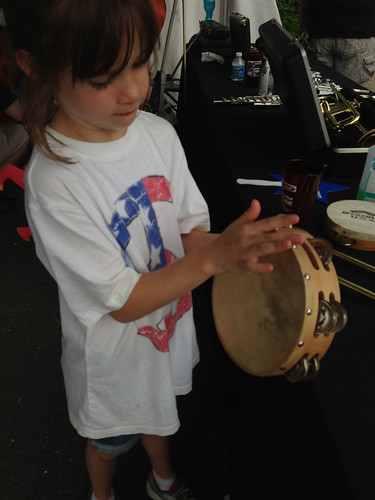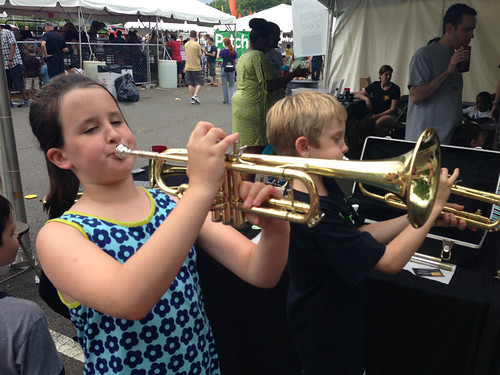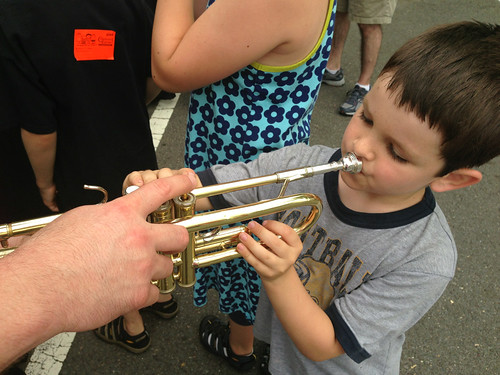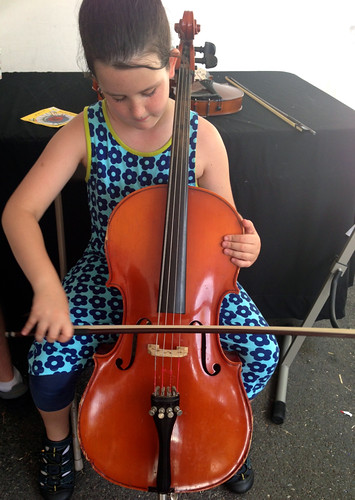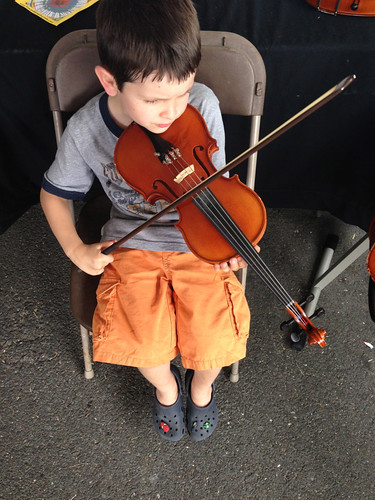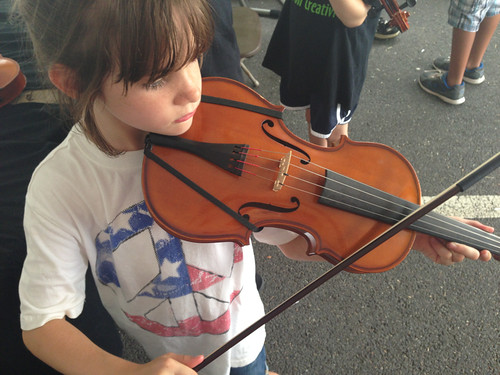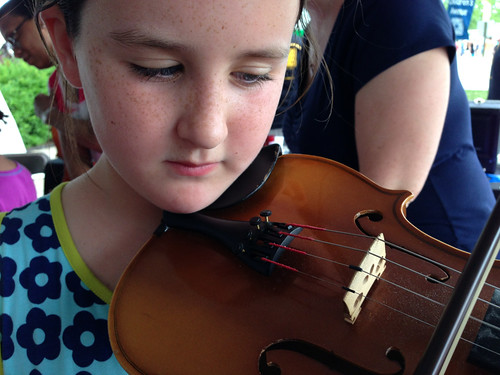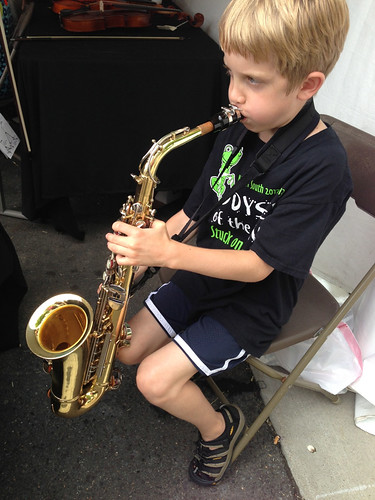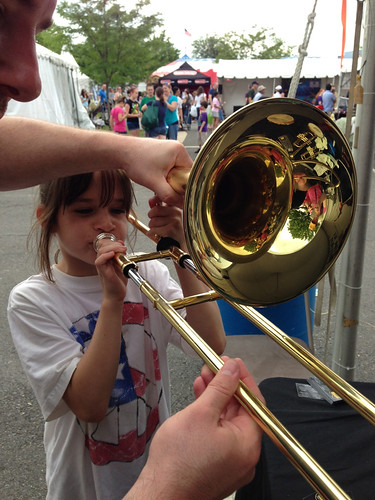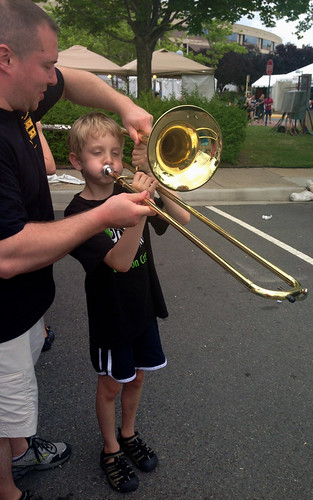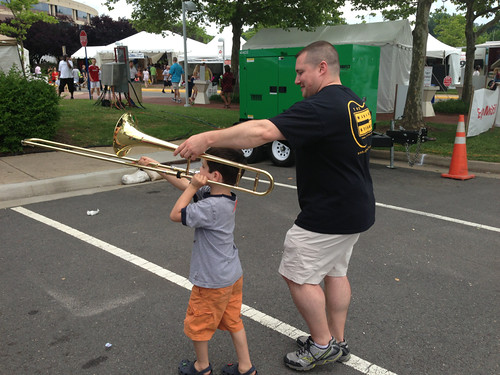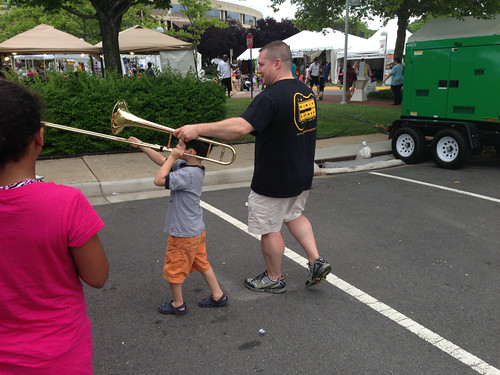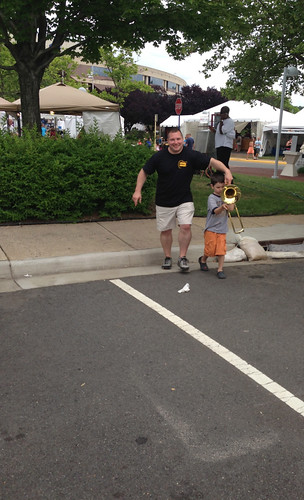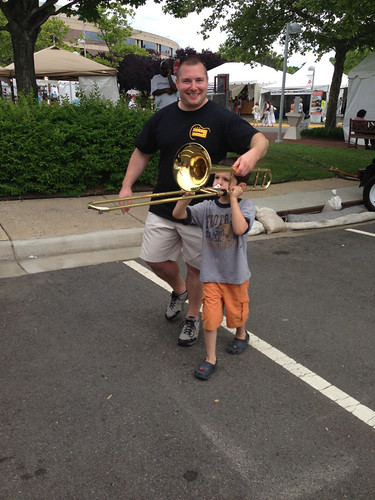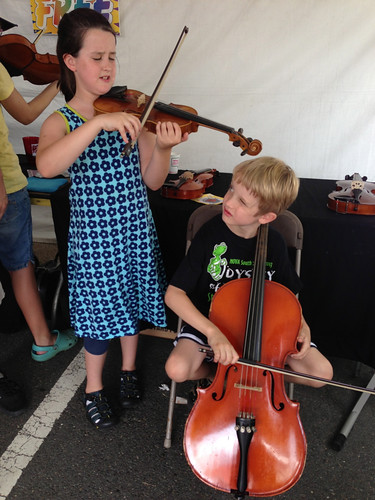I never quite got around to finishing my story about my trip to the
Northwest Territories which I should probably post in a "series" format to avoid the MEGA-post. But I'd rather keep my thoughts all in one place with this one, so with my apologies in advance ... MEGA-post it is.
Let's see, where was I?
Oh yes. I flew from Washington DC to Chicago ... and from Chicago to Calgary, Canada. This was the view from my hotel room when I arrived in downtown Calgary ...
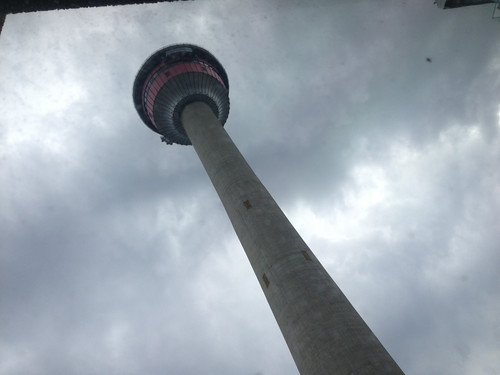
And this is the view again a few hours later.
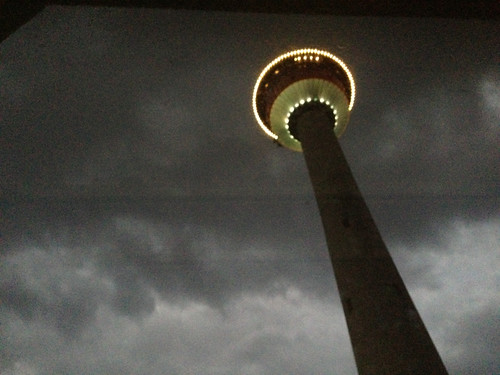
A few hours beyond that, I was on another (much smaller) plane bound for Edmonton. The sunrise through the little props was absolutely
spectacular and bordered on a religious experience for me.
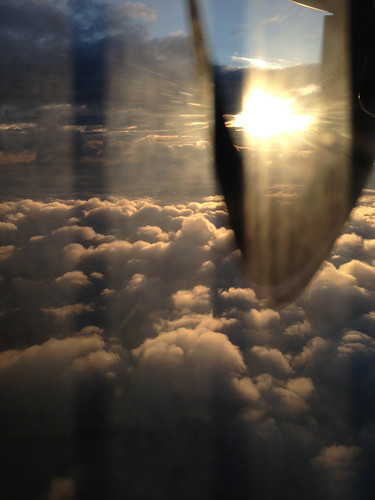
Once in Edmonton, we had to wait while our plane that would take us even further north was filled with cargo and supplies. What I learned on this trip is that there are only two ways to get supplies "in" to the arctic in the summer months: by air or by water. Because virtually
everything has to be transported in, the cost of goods and services are extremely expensive, which we realized when we discovered that a single watermelon cost $60.00 in the one and only village market.
If I'd known that watermelons were so valuable, I would have brought some with me!

In the winter months, ice roads are constructed - typically beginning in November / December, and supplies are transported by truck from around January through March. (I've since learned there's a
whole television series about the truckers that drive these roads.) By April, things have begun to thaw and in May the melts occur, which can flood some of the rivers in the region by more than 50 feet above their banks within less than 24 hours.
Once we boarded the plane and took off, I was extremely impressed that this friendly airline still serves food to its travelers. I don't think I've had a real meal on a plane since 1984, so flying with
Canadian North was "seriously" my all-time favorite flying experience in recent years past. Which isn't saying much, given my disdain of flying - but this omelet?
YUM!
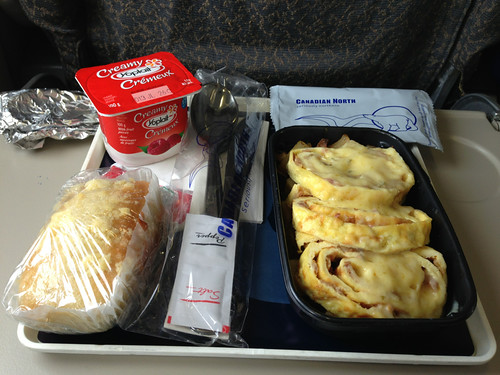
This was the view out of my window. What most surprised me is that as we flew, there was absolutely NO indication that humans had
ever been there. There were no roads, no buildings, no towers, no agricultural marks.
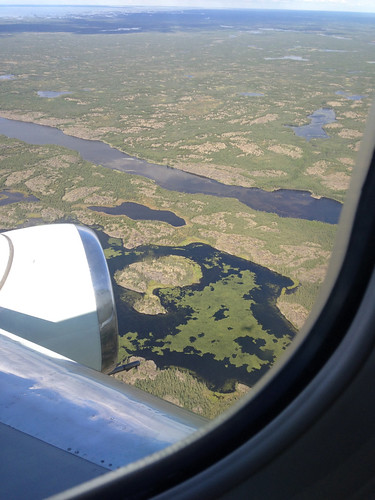
Just land for as far as the eye could see ... and then, water.

Here we are flying over the Great Slave Lake, which happens to be the
deepest lake in North America, on approach to Yellowknife. This was really awesome for me to experience, considering my Master's Thesis explored the source of terrigenous detritus in the Sierra Nevadas of California.
It's true!!
After mixing felsites from the Yellowknife Supergroup reported by a geologist in 1981, and miogeoclinal sediment collected by yours truly from the Sierra Nevadas in 1995, I concluded that the geochemical and detrital zircon data from the Sierras included Archean and post-Archean components derived from the Great Slave Lake region of Canada. Can you believe I actually flew over this region?!
I know, I know. Me neither!
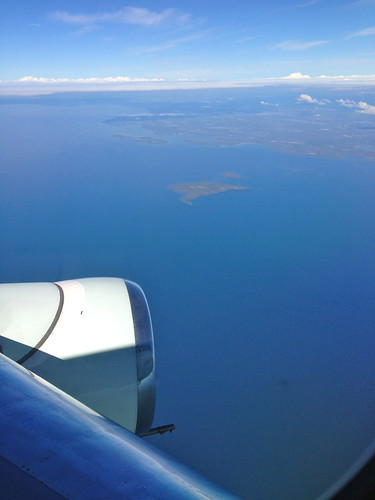
We landed in Yellowknife...
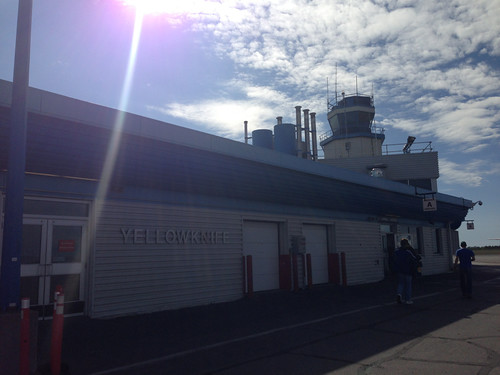
Exited the plane to stretch our legs and all the people who were flying north for the first time, paused to take photos of the polar bear going after the seal through the ice figure on top of the luggage carousel ...

And then we re-boarded the same plane for our flight even further north. Along the way, they handed out hot maple scones (which were
almost as good as my friend,
Holly's) and that's when I began to compose a love sonnet for Canadian North airlines, which I'll share once I complete.

The view out my window consisted of more beautiful untouched landscapes ...
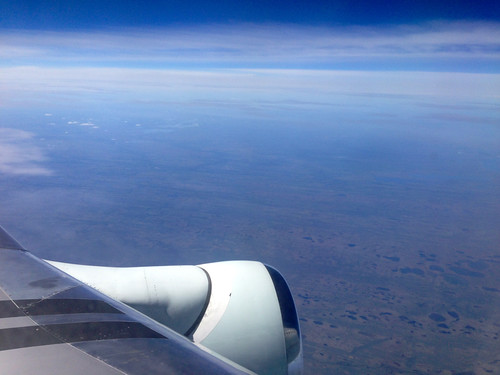
And meandering rivers ...

And then there were clouds and I fell asleep and woke up several hours later at our final destination. I think what stirred me from my slumber was the sound of someone saying, "Ho, Ho, Ho!" while reindeer bells were jingling. Or maybe that was just a dream?
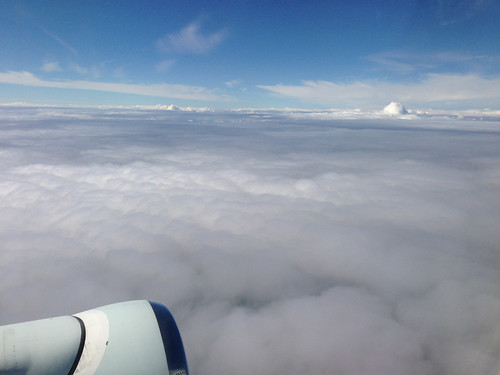
This was the license plate on our truck and because I was functioning off eight cumulative hours of sleep over two days, it took me a few minutes to recognize the polar bear.
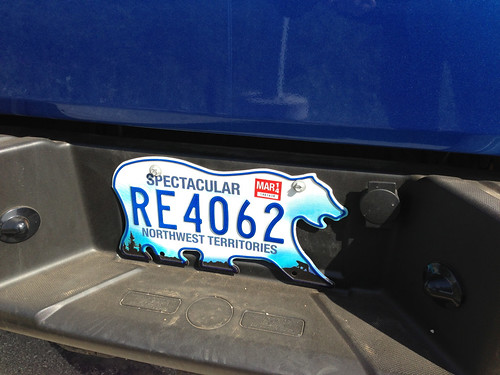
My team met to discuss our project, and we were handed cans of bear spray.

I thought it was unlikely we'd actually
see a bear ... but then we did. Several in fact. Huge black bears at the village dump. It was upsetting for me to see these beautiful creatures foraging through garbage, but the bears seemed downright thrilled.

It was equally disturbing to see fliers like this one posted about the village, but I suppose I can see how alcoholism is such a prevalent problem in an area where at least four months of the year, there is no more than four hours of sunlight each day (and two of those months have less than two hours).

There were also fliers such as this that cracked me up, because you'd certainly never see something like this in my neck of the woods. Also, what size Ziploc bag is the most appropriate, I wonder?
Snack size or gallon?
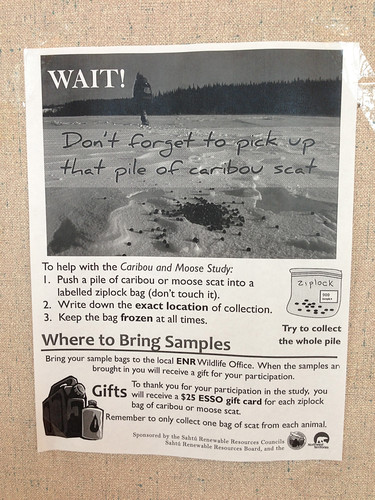
Caribous and Moose are HUGE!
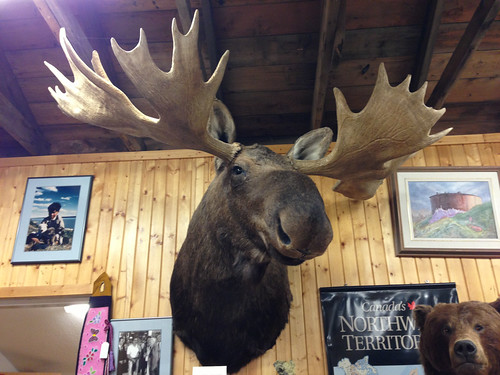
As are the mosquitoes ...
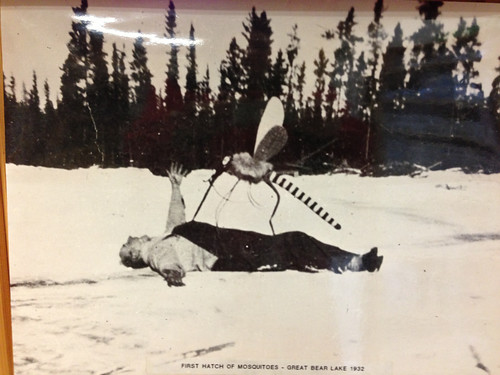
Like the one that took a bite out of my head and left me with a welt the size of an egg.

Mostly, I was struck by the ability of people to survive in such an environment. They will use whatever materials they have available - such as trees that have washed down the rivers, from faraway places because they don't look like ANY of the trees in this region - to construct things such as picnic tables...
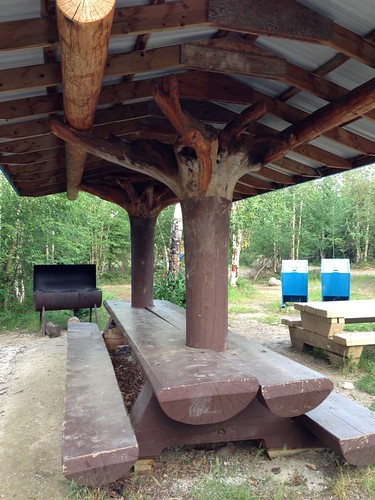
And bridges.
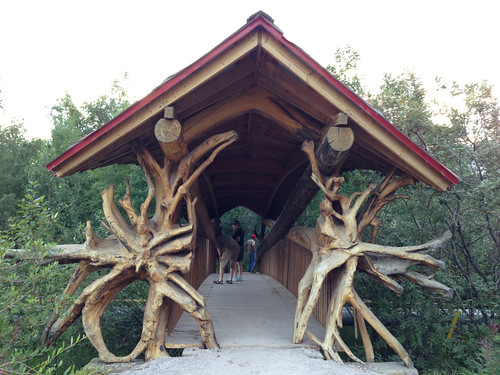
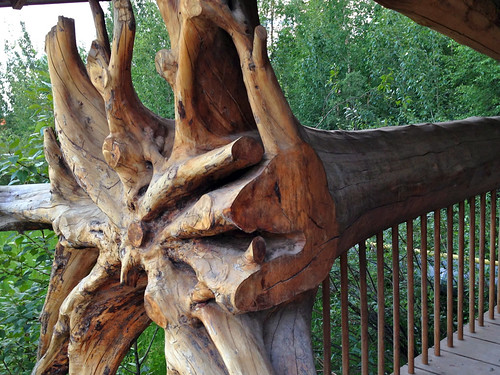
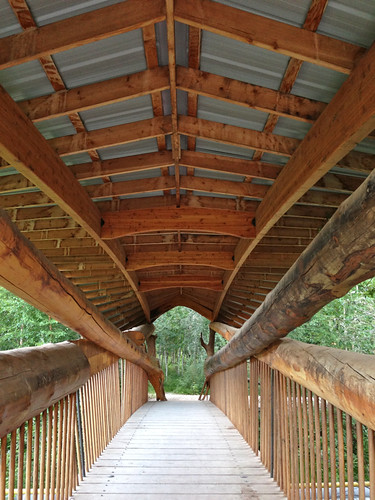
They will build their homes and structures on top of steel pylons that are driven more than 30 feet below ground surface to protect from the permafrost which can heave in the winter, and sink if it thaws in the summer. Every single structure that I saw was constructed
off the ground.
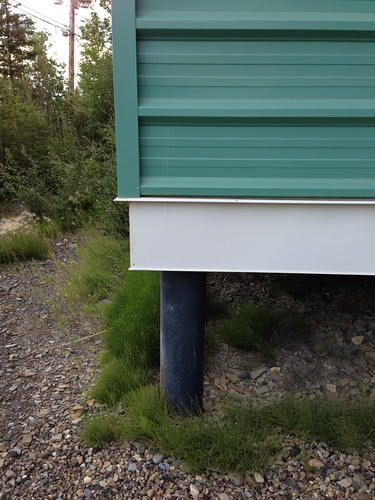
None had foundations (except this little outhouse in the woods).
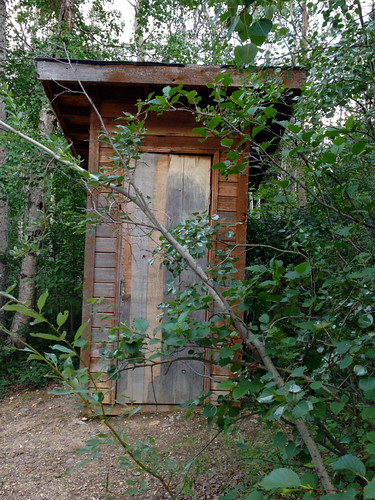
All the while, I was remembering that with the exception of lumber that is washed down river, everything -
everything to build these structures - is shipped in from afar and yes, now it makes sense why a little four bedroom house rents out for $30K a month.
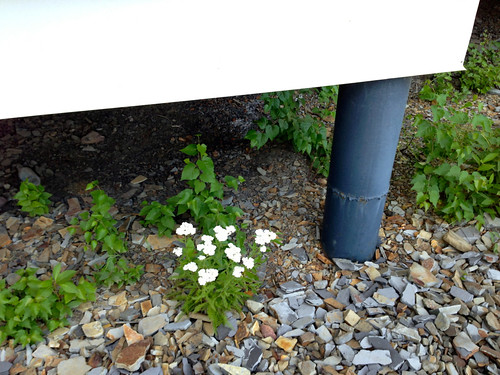
There were really only three types of people that I saw on this trip. There were those who worked in the oil industry - there were those who were there to hunt - and there were the aboriginals. Every one was so kind and gracious. And trusting. As evidenced by a canoe that was left alongside a lake bank for others to enjoy. One of my co-workers told me that he so wanted to explore this beautiful lake, but he didn't have a paddle in his possession. So he drove back to his workshop and grabbed a shovel - and spent an entire Saturday afternoon, shoveling his way around the perimeter.
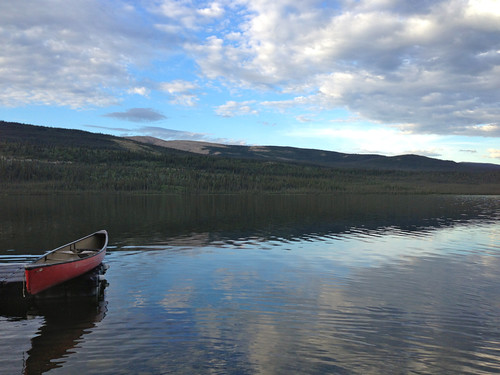
My co-worker is apparently one of the more clever engineers ... unlike the ones that installed the HVAC unit in our sleeping rooms.
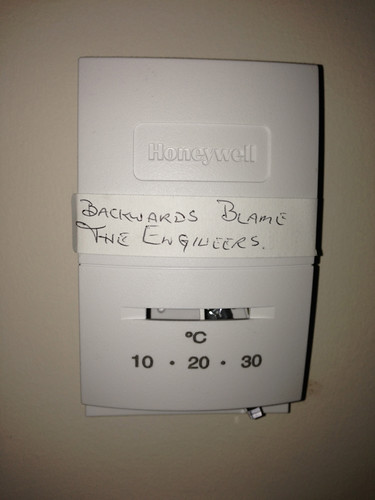
Speaking of temperatures... the temperature was around 75 degrees (F) for the first two days, and then dropped in to the 40's. Up until that point, I'd been telling everyone how I could see moving our family north. They'd LOVE it! And once I heard that it would cost $100K to simply mobilize a drill rig to this area where there are NO coffee shops for hundreds (more like thousands of miles), I thought how brilliant it would be if Charlie and I sold off everything and moved north and opened a place called, "Charlie's Cuttings & Coffee." We'd drill wells and sell coffee and our adventurous spirits would be at one with the natural world. But then, I remembered this is what happens to me when the temperature drops to 40 degrees. It's called
Raynaud's. Or, as I refer to it, "Corpse Hands." My host told me that 40 degrees is still considered balmy since it drops to a blustery MINUS 70 degrees (F) in the winter.
I couldn't even comprehend that kind of cold.
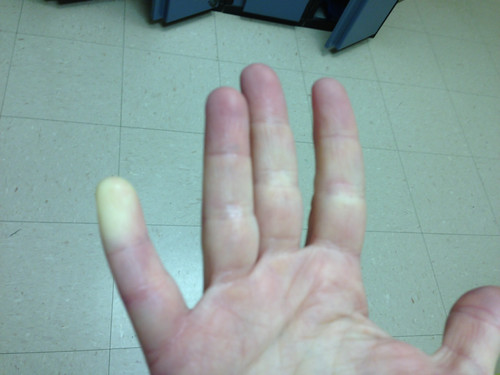
Just like I couldn't comprehend that the sun never really
sets in the summer. This is a photo taken at midnight. The second night I was there, I was up until 3AM sending pictures to Charlie every 30 minutes with the caption, "It's still bright outside!!"

"Still bright!"
"Oh my goodness, still bright!!"
Until he finally wrote back,
"I GET IT. NOW GO TO SLEEP, WOMAN."
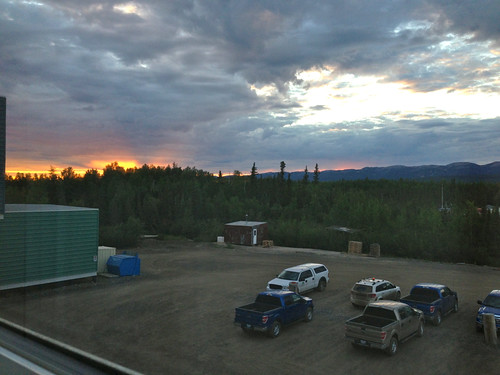
People that live in this region recognize that they only have a short span of time to get outside and enjoy their summer and from what I could tell, they take full advantage of it.
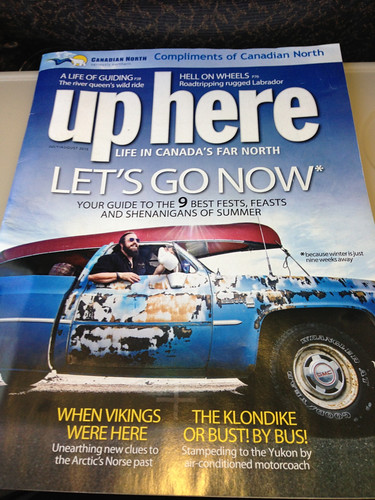
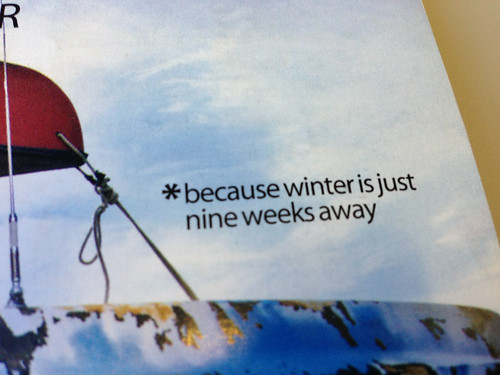
All in all, it was a wonderful trip and I feel very fortunate to have had the opportunity to go. Now, I'm very much looking forward to my next trip where from the town of Inuvik, I'll need to take a helicopter an
additional two hours north.
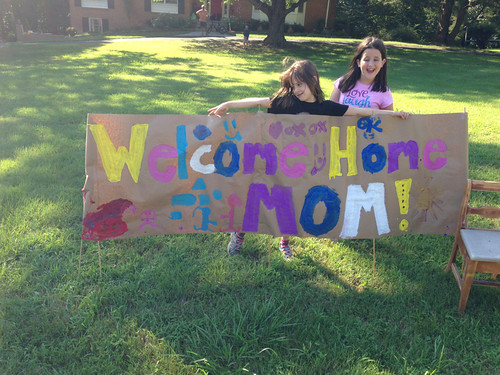
As always, the absolute
best part of my trip was returning home. If I could keep these ones in my pocket, my heart would be so warm I think I could actually handle the minus 70 degree temperatures. Especially if I was also sipping a cup of arctic-famous java from "Charlie's Cuttings & Coffee."
